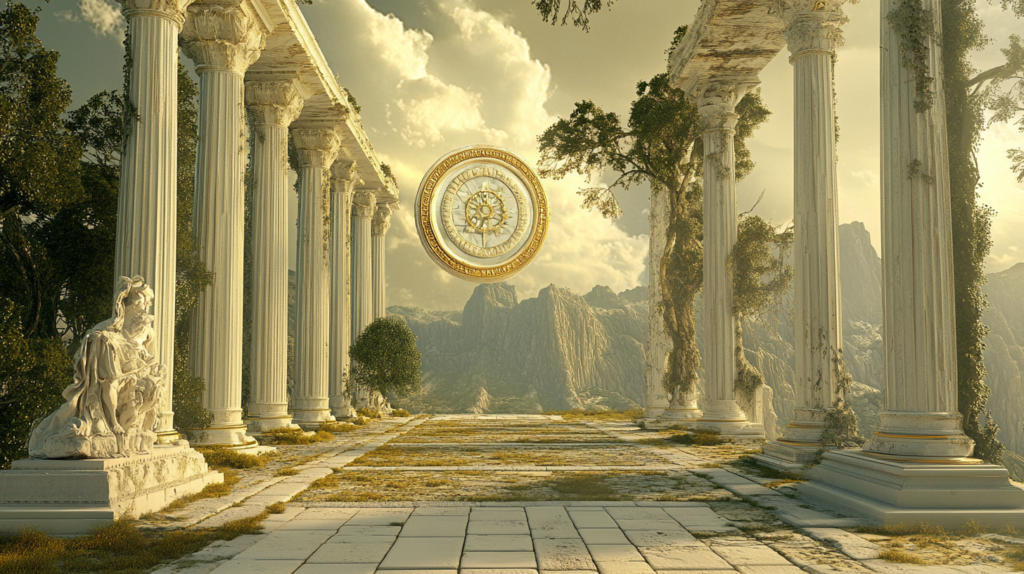Eterna: A Symbol of Timelessness in the Roman Empire
The word “Eterna,” derived from the Latin term Aeternus, translates to “eternal” or “everlasting.” In the context of the Roman Empire, Eterna held profound symbolic, philosophical, and cultural significance. It encapsulated the Roman ideals of endurance, legacy, and the unyielding pursuit of permanence in a world shaped by change.
This blog explores the meaning of Eterna and its importance in shaping the Roman worldview, influencing their architecture, governance, and cultural aspirations.

The Roman Concept of Eternity
To the Romans, eternity was both a philosophical and practical ideal. The empire was built on the belief that Rome was destined to endure forever—a concept famously expressed in the phrase:
“Roma Aeterna” (Eternal Rome).
This idea was rooted in Roman mythology, where the city’s founding was often tied to divine will. Raised by a she-wolf, the twin twins Romulus and Remus represented the heavenly beginnings of Rome and its promise of a lasting legacy.
Eterna in Roman Governance and Propaganda
Roman leaders leveraged the concept of eternity to legitimize their authority and inspire loyalty. The notion of an everlasting Rome became central to imperial propaganda, often reflected in coins, inscriptions, and public ceremonies.
Imperial Coinage: Roman coins frequently featured inscriptions like Aeternitas Augusti (the eternity of Augustus) or Aeternitas Imperii (the eternity of the empire). These phrases reinforced the idea that the emperor’s rule and the empire’s dominance were divinely sanctioned and destined to last forever.
Public Monuments: The construction of monumental architecture, such as the Colosseum, the Pantheon, and the triumphal arches, was a physical manifestation of Rome’s eternal aspirations. These structures, built to endure, symbolized the empire’s permanence and grandeur.
Civic Festivals: Festivals and ceremonies often celebrated aeternitas, emphasizing the empire’s resilience and unity. The Ludi Saeculares, or “Secular Games,” were held to mark the beginning of a new age, celebrating Rome’s continuity across generations.
Eterna in Philosophy and Religion
Eternity was not only a political tool but also a deeply ingrained philosophical and religious concept in Roman culture.
Stoic Philosophy: Roman philosophers, influenced by Stoicism, viewed eternity as a guiding principle of nature. The Stoic idea of logos (universal reason) emphasized the eternal order of the cosmos, mirroring Rome’s belief in its perpetual destiny.
Religious Practices: Roman religion incorporated the worship of deities associated with eternity, such as Aeternitas, the personification of eternity itself. Temples and altars dedicated to Aeternitas symbolized Rome’s divine favor and unending strength. Eterna in Art and Literature
Roman artists and writers often explored themes of eternity in their work, immortalizing the empire’s ideals and aspirations.
Literature: Poets like Virgil celebrated Rome’s eternal destiny in epic works such as the Aeneid. Virgil’s portrayal of Aeneas, the legendary ancestor of Rome, underscored the idea of Rome’s divinely ordained mission to rule the world forever.
Sculpture and Mosaics: Roman sculptures and mosaics frequently incorporated symbols of eternity, such as laurel wreaths, stars, and the phoenix—a mythical bird that rises from its ashes, embodying renewal and everlasting life.
The Practical Pursuit of Eternity
The Romans didn’t merely romanticize eternity—they sought to achieve it through tangible means:
Infrastructure: Aqueducts, roads, and bridges were designed to stand the test of time, reflecting the empire’s commitment to durability and long-term utility. Legal Systems: Roman law was meticulously crafted to endure across centuries. Many aspects of modern legal systems are rooted in principles established by the Romans, a testament to their pursuit of an eternal legacy.Modern hukuk sistemlerinin birçok yönü, Romalılar tarafından oluşturulan ilkelere dayanır ve bu ilkeler, onların ebedi bir miras arayışının kanıtıdır.
Eterna’s Modern Legacy
The Roman concept of eternity continues to inspire. From the enduring appeal of Roman architecture to the principles of governance and law, the influence of Eterna is evident in countless aspects of contemporary society.
Modern brands, artists, and philosophers often draw on the symbolism of eternity to evoke timelessness and durability. For example, jewelry collections inspired by Roman culture often incorporate the idea of Eterna, highlighting themes of permanence and legacy.
Conclusion
For the Romans, Eterna was more than a word—it was a guiding ideal that shaped their identity, ambitions, and achievements. Whether through grand monuments, enduring laws, or cultural works, the Roman Empire sought to immortalize its legacy. Today, the ruins of Rome stand as a testament to this pursuit of eternity. They remind us of the human desire to leave a mark that transcends time—a pursuit as relevant now as it was in the days of the Caesars. Eterna ruhuyla, kalıcı bir şey yaratmak, inşa etmek ve bunun için çabalamak için ilham alıyoruz.



